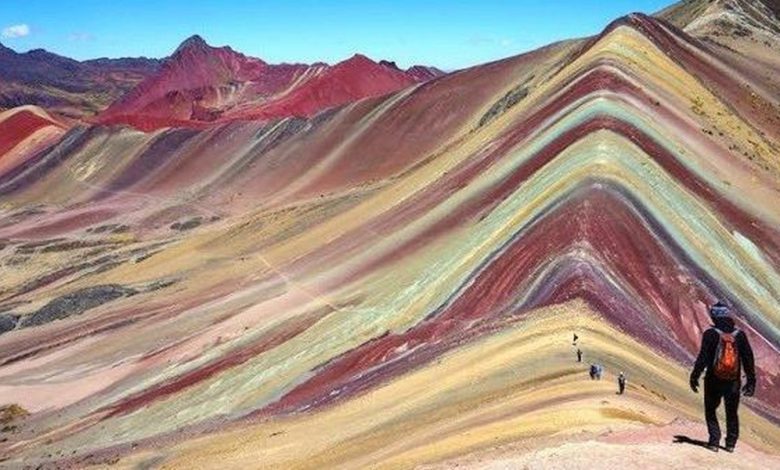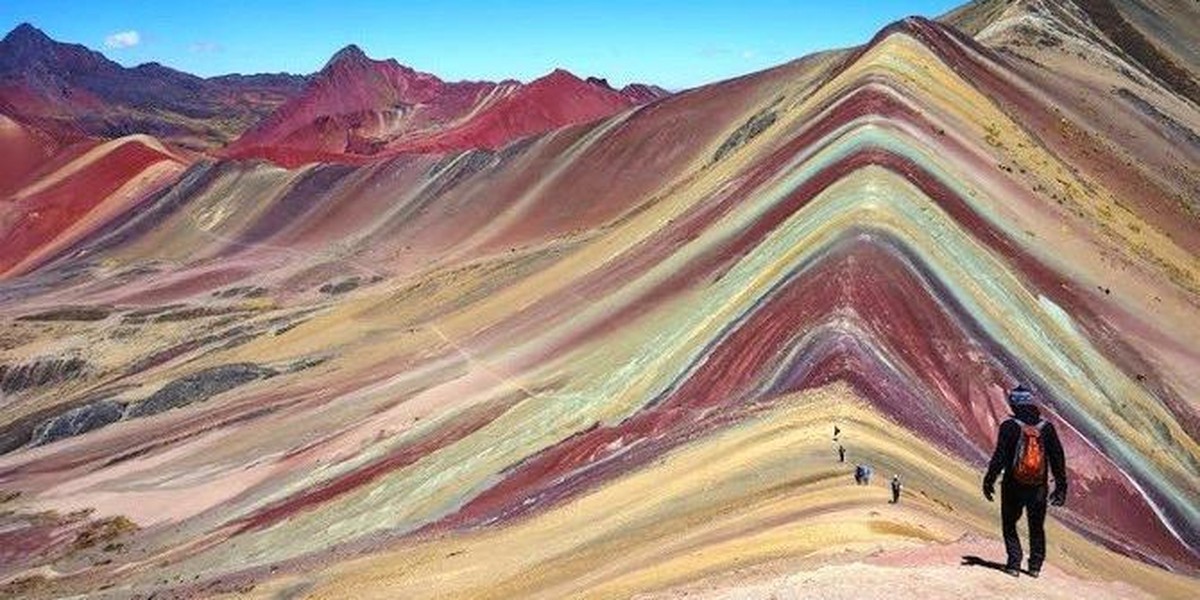Conflict and Proposals on Rainbow Mountain, Wininkunka

By Eric J. Rayner and Nelida Azucena Ccarita Cusiwata with the help of David Knowlton
Rainbow mountain, as Wininkunka or Cerro Colorado, is called in the tourist trade has become a popular place for tourits to visit because of its natural splendor and because of the view a visit gives of people’s lives. Nevertheless, this tourism is creating conflicts and difficulties among local people.
Wininkunka, to use the local name, is substantially found within the province of Canchis and the district of PItumarca. Its government is petitioning for the creation of a “landscape reserve.” Called a reserva paisajistica in Spanish, the designation is intended to protect the natural qualities of the landscape that make it unique as well as the cultural landscape that is part of it.

The proposed designation responds to reported attempts by the neighboring province of Quispicanchis to claim land that is traditionally part of Pitumarca and includes the Cerro Colorado. At the same time, it protects the rights of the people who reside in the preserve to protect their way of life, their property, and to set guidelines for tourism and benefit from it within the designation’s rules. The preserve will include local farmers, herders, and weavers. The Winikunka Landscape Reserve will join the Valle de Ausangate Tourist circuit.
The proposal also responds to reported efforts by a Non-Governmental Organization whose comments we do not have, ACCA (Asociación para la Conservación de la Cuenca Amazónica), in conjunction with a local community member, to reportedly privatize the zone for the benefit of the NGO. The specific community of Pampachiri, part of Pitumarca, mentions these efforts while attempting to block them through the proposed landscape reserve.

Indeed, tourist agencies and powerful non-governmental organizations have been known to block and subvert local efforts to control conservation and tourism for community ends and goals, rather than for the market these agencies and organizations represent. Communities in many parts of the world find themselves in a a struggle to maintain their values and goals in the face of strong outsiders.
Tourism’s feverish obsession with Rainbow Mountain has already had a devastating impact on the ridge and the adjoining valley’s sensitive environment and more importantly on its inhabitants. Despite the challenging 5,200-meter ascent, hundreds of trekkers a day are invading the Ccayahuire valley, where Wininkunka is located, and are soon expected to overwhelm the Ausangate circuit and surrounding environments.
Extended families of alpaca and sheepherders make up two high altitude communities, Alto and Bajo Ccayahuire in the affected area. They live at substance level through grazing and producing native highland potatoes.
Both communities are officially part of the Comunidad Campesina de Pampachiri. The two highland communities claim that recent tourism is destroying the sensitive alpine environment, stressing alpaca herds to the point of causing disease and ruining the community’s quality of life.
Brought by tourist agencies, registered and informal, tourism overwhelms the small alpine valley communities with dust and noise while carving deep tracks through the delicate soil. Some trekkers reportedly harass alpaca herds for enjoyment or for photographs and disturb the wild flora and fauna, especially wild herds of the rare vicuña which are pressured to occupy other parts of the reserve. Despite the unwelcome intrusion onto their lands, the people are friendly and hospitable.
The province of Pitumarca asks local herders to maintain the rapidly deteriorating trail, an arduous task at any elevation. The local communities also supervise the high altitude pass, (5,200 meters), the viewpoint and a small ruin still functioning as an earth shrine (huaca). Locals receive no compensation for their hard work or for external access to their land and water. Except for horse rentals, almost all tourism profits go to the tourism industry in Cusco.
Inhabitants of the Ausangate Valley are primarily Quechua speaking—one of two principle native languages in the Andes. Traditionally, the valley is divided into four quadrants, Pampachiri, Pitumarca, Ccpaqchapi, e Ilave regardless of terrain. Covered by spongy mats of green vegetation, the high altitude at 4,500 meters is drained by streams. In the puna, communities are almost exclusively Quechua Speaking. Because they speak almost no Spanish they are vulnerable to exploitation from Cusqueños and locals who are wealthier and more formally educated. Spanish and Quechua bilinguals and their families living in the villagesand towns have also begun to exploit the highlands for tourism.
People of the Ausangate valley consider the Rainbow Mountain’s ridge, its pass and surrounding mountains, to be Apus, sacred “mountain beings”, who protect the region’s environment and its inhabitants. According to legend, the ridge with its multicolored striations is the inspiration for the region’s fine weavings.
On May 18, 2016, UNESCO and the Peruvian Ministry of Culture declared the Ausangate valley’s expert weavers and their multicolored tapestries together with their unique iconography UNESCO world heritage (Patrimonio de la Humanidad).
The province of Pitumarca expects that the declaration of a Landscape Reserve for Wininkunka will help control the flow of tourism through the Ausangate valley and aid the preservation of its traditional culture and delicate environment.




